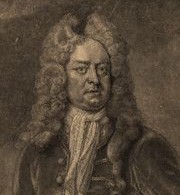
Jacobitism was a political movement that supported the restoration of the senior line of the House of Stuart to the British throne. The name derives from the first name of James II and VII, which in Latin translates as Jacobus. When James went into exile after the November 1688 Glorious Revolution, the Parliament of England argued that he had abandoned the English throne, which they offered to his Protestant daughter Mary II, and her husband William III. In April, the Scottish Convention held that he "forfeited" the throne of Scotland by his actions, listed in the Articles of Grievances.

James FitzJames Butler, 2nd Duke of Ormonde, (1665–1745) was an Irish statesman and soldier. He was the third of the Kilcash branch of the family to inherit the earldom of Ormond. Like his grandfather, the 1st Duke, he was raised as a Protestant, unlike his extended family who held to Roman Catholicism. He served in the campaign to put down the Monmouth Rebellion, in the Williamite War in Ireland, in the Nine Years' War and in the War of the Spanish Succession but was accused of treason and went into exile after the Jacobite rising of 1715.

Meinhardt Schomberg, 3rd Duke of Schomberg, Duke of Leinster, KG, was a general in the service of Willem, Prince of Orange and Stadtholder of Holland, later King William III of England. He fought in the Franco-Dutch War, then played a crucial role at the Battle of the Boyne in July 1690 during the Williamite War in Ireland and finally commanded the British troops deployed to Portugal during the War of the Spanish Succession.
Earl of Tyrconnell is a title that has been created four times in the Peerage of Ireland.

Sir John Cope was a British soldier, and Whig Member of Parliament, representing three separate constituencies between 1722 and 1741. He is now chiefly remembered for his defeat at Prestonpans, the first significant battle of the Jacobite rising of 1745 and which was commemorated by the tune "Hey, Johnnie Cope, Are Ye Waking Yet?", which still features in modern Scottish folk music and bagpipe recitals.
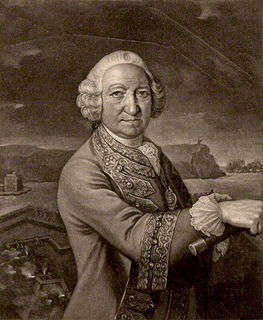
Lieutenant General William Blakeney, 1st Baron Blakeney, KB, 7 September 1672 to 20 September 1761, was an Irish-born officer who served in the British army from 1695 until 1756. From 1725 to 1757, he also sat in the Parliament of Ireland as MP for Kilmallock, although he rarely attended.

Lieutenant Colonel Sidney Godolphin (1652–1732) was a soldier and politician from Cornwall and Member of Parliament for various seats between 1685 and 1732, becoming Father of the House in 1730. He also reached the rank of Lieutenant Colonel and was Governor of Scilly from 1700 until his death in September 1732.

The 2nd Dragoon Guards was a cavalry regiment of the British Army. It was first raised in 1685 by the Earl of Peterborough as the Earl of Peterborough's Regiment of Horse by merging four existing troops of horse.
Lieutenant-General William Kerr, 2nd Marquess of Lothian, was a Scottish peer who held a number of minor military and political offices. He was known by the courtesy title of Lord Newbattle until 1692, when he succeeded as Lord Jedburgh, then as Marquess of Lothian when his father died in 1703.

William Bromley of Baginton, Warwickshire, was an English Tory politician who sat in the English and British House of Commons between 1690 and 1732. He was Speaker of the House of Commons of Great Britain from 1710 to 1713 and Secretary of State for the Northern Department from 1713 to 1714.

Gustavus Hamilton, 1st Viscount BoynePC (Ire) (1642–1723) was an Irish soldier and politician. In his youth he fought in his cousin Sir George Hamilton's regiment for the French in the Franco-Dutch War. About 1678 he obtained a commission in the Irish Army. King James II appointed him to his Irish Privy Council in 1685.
The Honourable Frederick Hamilton was an Irish politician who represented Donegal County in three Irish parliaments. He was also heir apparent to his father, Gustavus Hamilton, 1st Viscount Boyne. He predeceased him but his son succeeded as the 3rd viscount.

General Sir Charles Wills was a professional soldier from Cornwall, who was Lieutenant-General of the Ordnance and Member of Parliament for Totnes from 1718 to 1741.

Lieutenant-Colonel George Carpenter, 2nd Baron Carpenter FRS of the Homme, Dilwyn, Herefordshire was an English landowner and Member of Parliament at different periods between 1717 and 1747.
General Daniel Harvey was a British soldier and politician who was Governor of Guernsey from 1714 to 1732.
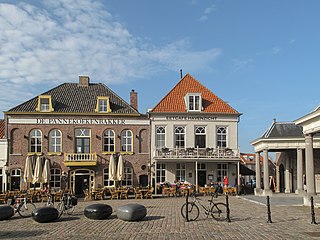
Lieutenant General Roger Handasyd, also spelt Handaside, was an English military officer and Member of Parliament for different seats between 1722 and 1754.
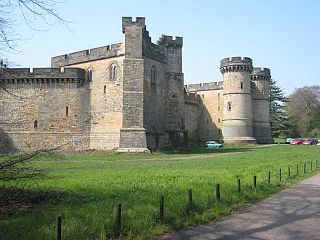
Sir Henry Belasyse, also spelt Bellasis, was an English military officer from County Durham, who also sat as MP for a number of constituencies between 1695 and 1715.
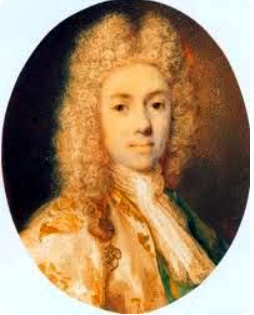
William Murray, Marquess of Tullibardine was a Scottish nobleman and Jacobite who took part in the rebellions of 1715, 1719, and 1745.

Henry Withers was a British army officer and politician, who began his career in 1674 during the Franco-Dutch War and reached the rank of Lieutenant General in 1707. A close associate of the Duke of Marlborough during the War of the Spanish Succession, he served in a number of actions, including the 1704 battles of Schellenberg, Blenheim, and Malplaquet in 1709.
